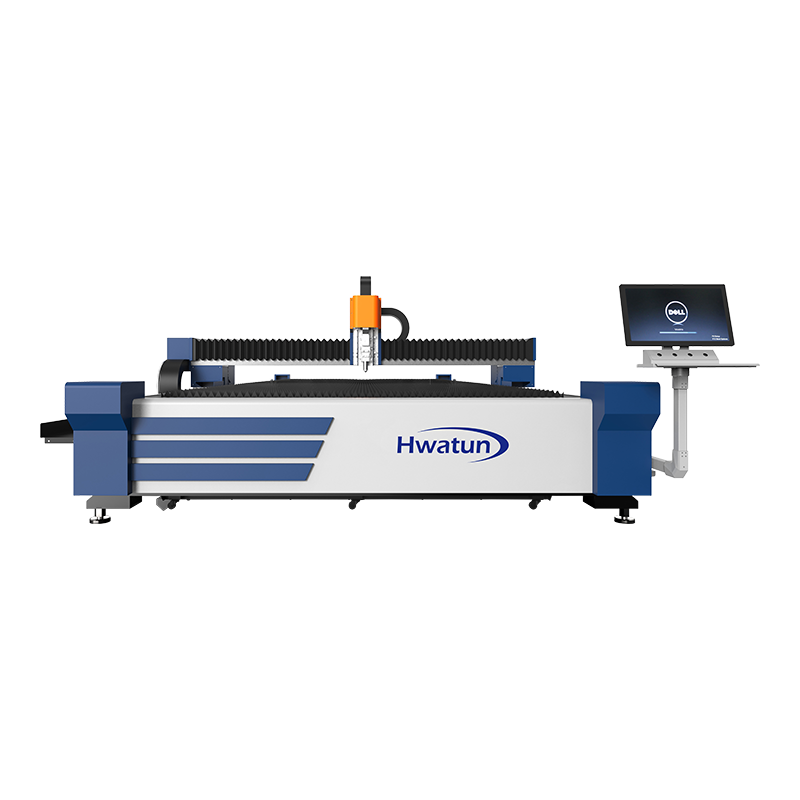Web Menu
Product Search
Exit Menu
What are the characteristics and applicability of CNC LASER CUTTING MACHINE materials?
CNC laser cutting machines are versatile tools used to cut a wide range of materials with high precision and efficiency. Understanding the characteristics and applicability of different materials is crucial for optimizing the laser cutting process.
Characteristics of CNC Laser Cutting Materials
Metals
Common Types: Steel (carbon and stainless), aluminum, brass, copper, titanium.
Properties:
Conductivity: Metals generally have high thermal conductivity, affecting heat distribution during cutting.
Thickness: Laser cutting is effective for various thicknesses, though optimal thicknesses vary by material.
Melting Point: Each metal has a specific melting point, influencing cutting speed and quality.
Non-Metals
Common Types: Plastics (like acrylic and PVC), wood, textiles, ceramics, and composites.
Properties:
Absorption: Non-metals vary in how well they absorb laser energy, impacting cutting efficiency.
Thermal Sensitivity: Many non-metals are sensitive to heat, requiring precise control to avoid warping or burning.
Edge Quality: Non-metals may produce a different edge finish compared to metals, often requiring post-processing.
Thickness Range

The laser cutting capability varies by material type and thickness. Generally:
Thin Metals (up to 6 mm): Excellent cutting quality and speed.
Thicker Metals (6 mm to 20 mm): Slower cutting speeds with potential for decreased quality.
Non-Metals: Typically can be cut up to 20 mm depending on the material, with acrylic and wood being particularly favorable.
Surface Finish
The surface finish of the material affects the laser cutting process. Rough surfaces can lead to uneven cutting, while smooth surfaces generally yield better results.
Applicability of Materials in CNC Laser Cutting
Metals
Steel: Widely used in construction and automotive industries. Laser cutting allows for intricate designs and shapes.
Aluminum: Lightweight and corrosion-resistant, ideal for aerospace and automotive applications. Laser cutting ensures precision in complex parts.
Copper and Brass: Used in electrical applications and plumbing. Copper requires special considerations due to its reflectivity.
Titanium: Strong and lightweight, often used in aerospace. Requires specific cutting parameters due to its properties.
Non-Metals
Plastics: Commonly used in signage, displays, and industrial parts. Acrylic is particularly popular due to its clarity and ease of cutting.
Wood: Favored for furniture and decorative items. The laser can produce intricate designs, but care must be taken to manage smoke and potential burning.
Textiles: Used in fashion and upholstery. Laser cutting allows for clean edges without fraying, enhancing the quality of finished products.
Ceramics and Composites: Used in specialized applications. Laser cutting can provide high precision but may require slower speeds and careful handling.
CNC laser cutting machines are adaptable and capable of handling a variety of materials, each with distinct characteristics that influence the cutting process. Understanding these characteristics helps operators select the right materials for specific applications, optimize cutting parameters, and ensure high-quality outputs. Industries ranging from manufacturing to fashion benefit from the precision and versatility of CNC laser cutting technology. By leveraging the unique properties of each material, businesses can achieve efficient production and innovative designs.
News categories
Product categories
Related Products
 +86-159 5138 1316
+86-159 5138 1316 +86 180 6819 3096
+86 180 6819 3096 [email protected]
[email protected] Group 4, Xinba Village, Binhai New Area (jiaoxie Town), Laoba Port, Nantong City, Jiangsu, China.
Group 4, Xinba Village, Binhai New Area (jiaoxie Town), Laoba Port, Nantong City, Jiangsu, China.
Copyright © Nantong Hwatun Heavy Machine Tool Co., Ltd. All Rights Reserved.

 Eng
Eng  简体中文
简体中文 Español
Español русский
русский







